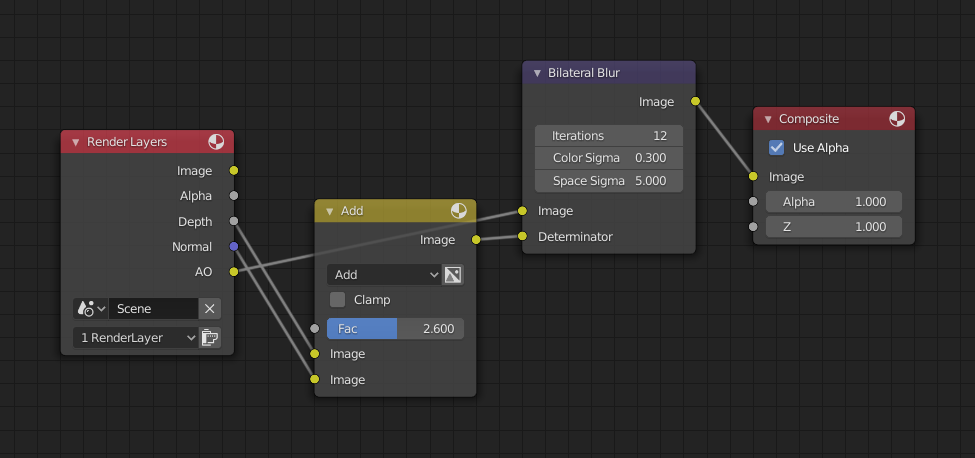Bilateral Blur Node¶

The Bilateral Blur node performs a high-quality adaptive blur, blurring the image while retaining sharp edges.
It can be used for various purposes like: smoothing noisy render passes to avoid longer computation times in example ray-traced ambient occlusion, blurry refractions/reflections, soft shadows, or to make non-photorealistic compositing effects.
Inputs¶
- Image
Standard color input. If only the image input is connected, the node blurs the image depending on the edges present in the source image.
- Determinator
Which is non-obligatory and if the Determinator is connected, it serves as the source for defining edges/borders for the blur in the image. This has great advantage in case the source image is too noisy, but normals in combination with Z-buffer can still define exact borders/edges of objects.
Properties¶
- Iterations
Defines how many times the filter should perform the operation on the image. It practically defines the radius of blur.
- Color Sigma
Defines the threshold for which color differences in the image should be taken as edges.
- Space Sigma
A fine-tuning variable for blur radius.
Outputs¶
- Image
Standard color output.
Example¶

Bilateral smoothed Ambient Occlusion. blend-file example¶

